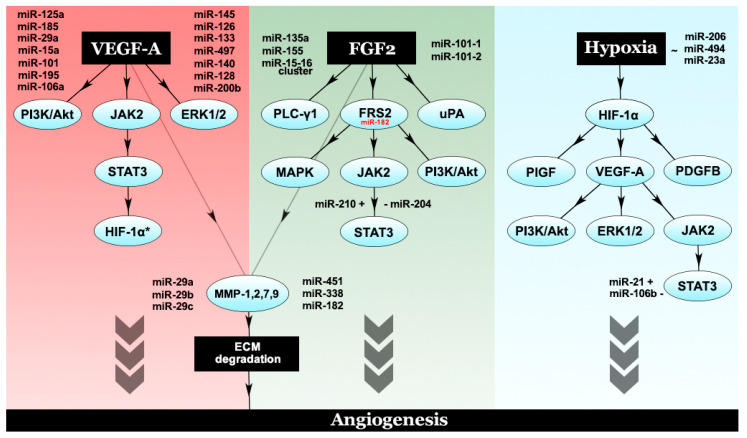Figure 2.
The interplay between different proangiogenic factors and their corresponding modulatory microRNAs. VEGF-A, the chief proangiogenic entity, activates PI3K/Akt, ERK1/2 and JAK2/STAT3. Phosphorylated STAT3 leads to HIF-1α activation, which further increases VEGF-A levels through an autocrine loop. FGF2 activates PLC-γ1, uPA and FRS2. Downstream effectors of FRS2 include the MAPK pathway PI3K/Akt and STAT3. Both VEGF-A and FGF2 are capable of activating a number of MMPs, such as MMP-1,2,7,9, which degrade the ECM and promote angiogenesis. Another major player in angiogenesis is considered to be hypoxia, which exerts its molecular effects through HIF-1α, the hypoxic master regulator. HIF-1α promotes the expression of a number of proangiogenic factors—PlGF, PDGFB and VEGF-A.

